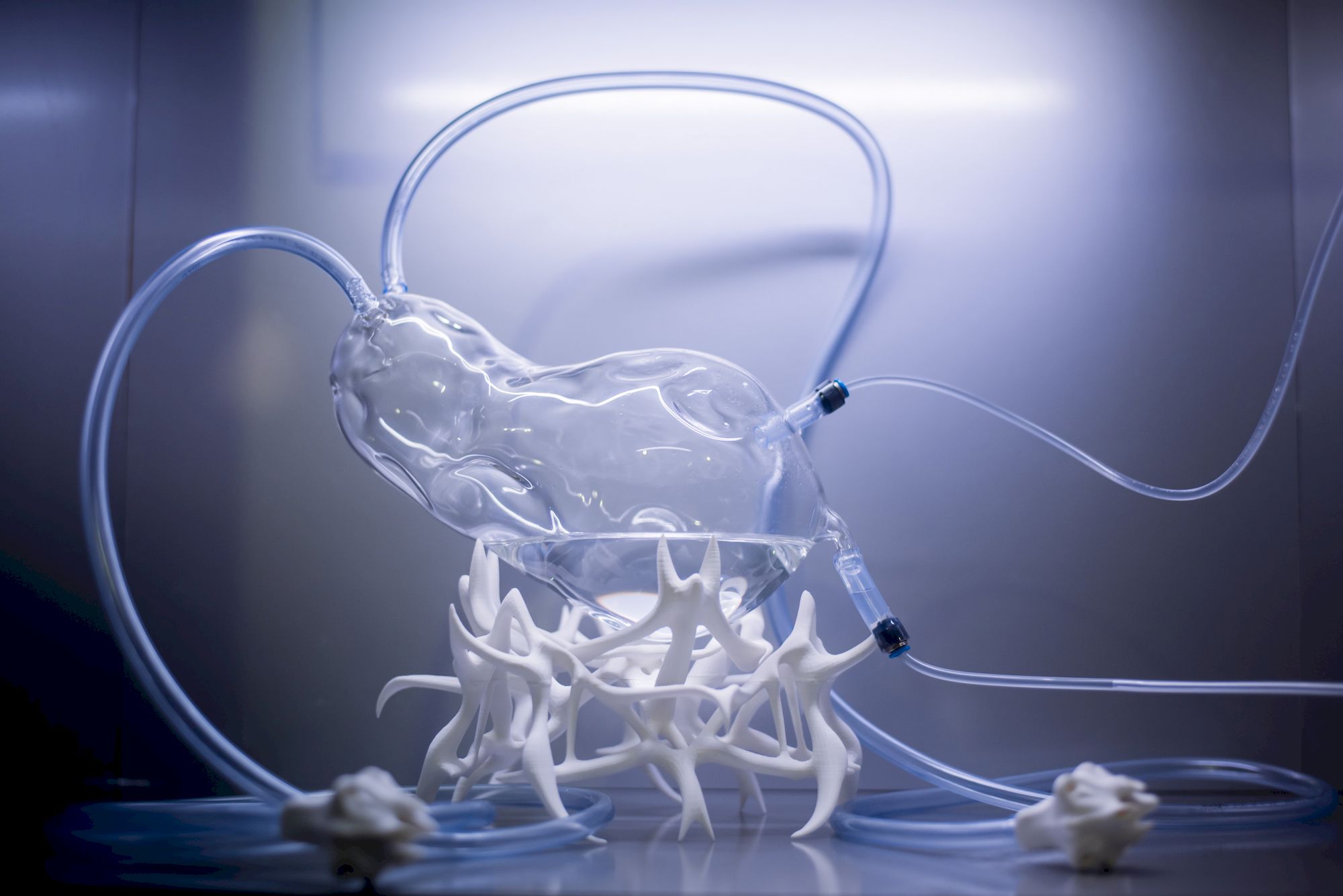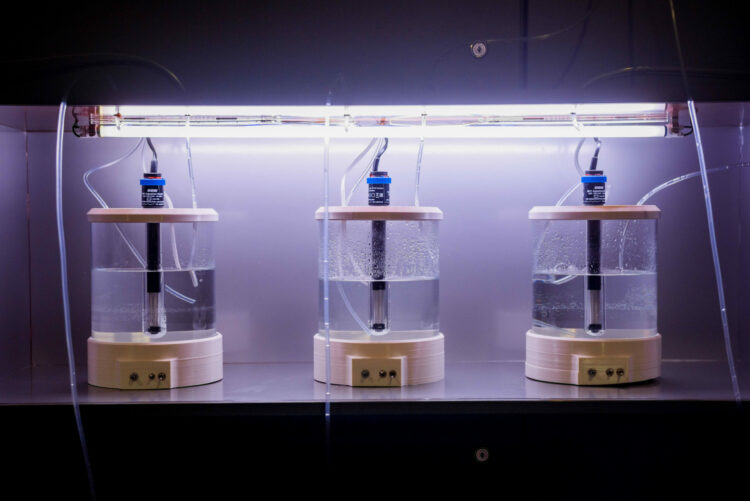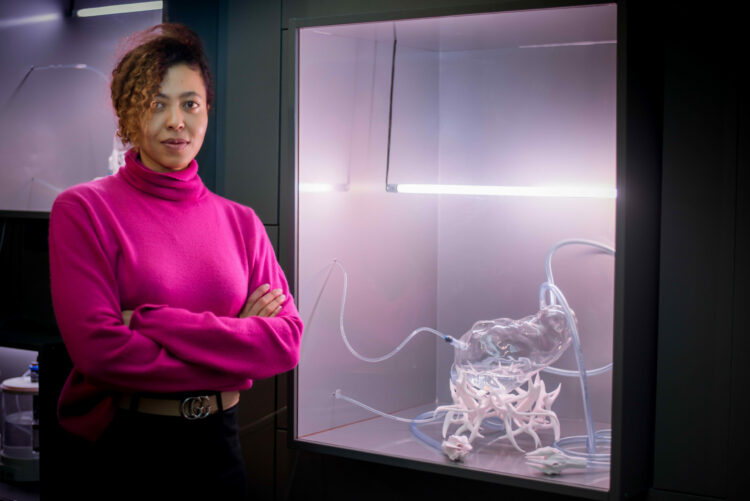Art4Med: Smelling as a multipurpose sense of the future
Published 9 February 2022 by Dare Pejić
Quorum sensing: Skin Flora Sensing System, an investigative art science project by Helena Nikonole and Lucy Ojomoko, proposes smelling as potential detection activity to track diseases and becomes a (self)diagnosing tool. Makery met with Kersnikova’s selected residency duo in Ljubljana as a follow-up to their interview in May 2021.
If you lost sense of smelling, for example during the Covid-19 infection, you might know the feeling. The sensation of your daily interactions, like eating or meeting your close ones, leaves you with a placid aftertaste. Now imagine that the limited scope sense for smelling humans have been left with throughout the evolution, is enhanced by a new function. The prototype presentation of Quorum sensing, an artificial smelling organ with biomorphic-looking shape, as it was presented by Kersnikova in November 2021 – at one of the five producers in ART4MED consortium – is a project that sees new forms of interspecies communication possible.

Smells like skin spirit
“Now we can see that there are floral bacteria that can be connected with the skin flora, skin’s surface. This can serve as a new sub-organ that was not present before”, explains Lucy Ojomoko, a molecular biologist and an artist. With genetically modified bacteria of human skin microbiome Ojomoko and Nikonole are busy with lab programming the bacteria in such a way that is affects the sense of smell transmitted by the human body.
This radically new paradigm-changing approach to health and disease prevention holds emancipatory potential. This would eventually be seen as an interspecies communication, not only between humans, as the authors proposed, but also with different species, like insects and animals that would be able to sense it. “It brings us to the new stage of interaction with each other. I think it’s a nice study of post-humanistic view. In this way, we see a truly symbiotic way of interaction”, Ojomoko underlined.


Post-institutional self-diagnostics
Quorum sensing, as the name already suggests, concerns multitudes. “It defines work with many processed bacteria”, Helena Nikonole describes. “In a way, the bacteria can work all together so we can see it as a new organ”, Nikonole adds, while we stand in front of the impressive prototype. In order to make it visible, the three human-made glass bowls are supported by 3D-printed stands with tube mixers on the one side of the installation and the biomorphic smelling devices on the other.
“I see it as a poetry of the new type of communication. We bring some new features into the bacteria and we bring the interface that can interact with our body, external environment and can be connected with our inside’s condition,” Ojomoko sums up her impressions about new proof-of-concept exhibited at Kersnikova venue.

The duo worked together with the Biotechnical Faculty of Ljubljana. In order to further develop the findings, the testing phase should be conducted in accordance with the ethical standards. The creative part of art-driven innovations is worth exploring and investing. Quorum sensing, as an organ that enables disease detection through human skin, portraits the playful aspect that science is not always keen to embrace immediately.
“This project shows that if there’s a possibility for common research by the DIY makers, health and medicine researchers that this can lead to innovation”, explains Simon Gmajner, Kersnikova’s art producer. Human skin microbiome gene modifications are, as Gmajner claims, potentially emancipatory project that leads to deinstitutionalized self-diagnose, free from doctor’s or institution’s authority.
For Gmajner, there’s something beautiful and perverse at the same time when someone with a cancer could smell of roses. At this point, the fatality and beauty would ironically meet in smell of roses. At Quroum Sensing shows, medicine research with art-driven interventions paves the way for validation of both disciplines outside of their comfort zones. “The most interesting things to see are in the in-between”, Lucy Ojomoko concludes.
More about “Quorum Sensing” at the ART4MED consortium website
ART4MED consortium is coordinated by Art2M / Makery (Fr) in cooperation with Bioart Society (Fi), Kersnikova (Si), Laboratory for Aesthetics and Ecology (Dk), Waag Society (Nl), and co-funded by the Creative Europe program of the European Union.
